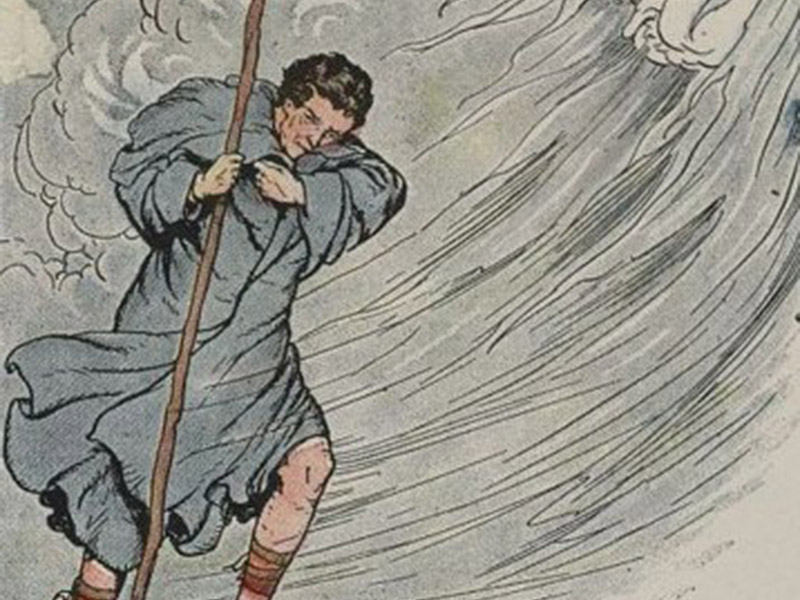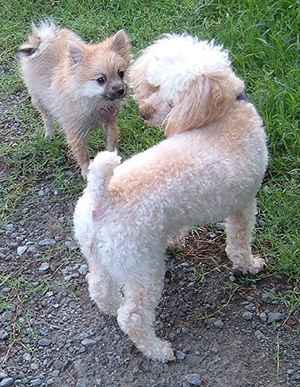
Red Rover Pet Services LLC, Training, Dog Boarding, Poodle Rescue, & More
Nashville's original social dog place to play & stay!
Anthropomorphizing or Do Unto Others

My current philosophy of how to train and treat dogs has been occasionally charged with being “anthropomorphic.” You may say, “hunh?”
The word anthropomorphism was coined to describe how we humans tend to give our own characteristics to non-humans, originally to gods or natural phenomena like wind. Some people say guessing what your dog might do based upon your knowledge of how you would react is incorrect because it’s anthropomorphic. Let the professional scientists grow and learn about that one. You worry about what works with your dog.
Here are a couple of important points to consider if this troubles you.
- Canines and humans are mammals. I don’t care how many people tell you we’re not animals, scientifically we are. Mammals all:
- have body hair, waxing and shaving aside…
- nurse our young
- have physical characteristics in common such as the bones in middle ear; I know… “Yada yada yada!”
- Canines and humans have been living in partnership for at least 3,000 years and, quite possibly, more than 10,000 years! We have many things in common. I encourage you to use those things, along with your knowledge of your own dog, to help create a useful bond.
So if you assume your dog will behave a certain way based upon how you behave; and that helps you reliably guess your dog’s next behavior; keep it up! If a belief doesn’t work for you and your dog, or your assumption makes it impossible or very difficult for you to move forward in your training and build that wonderful bond, STOP IT! In the interest of full disclosure I got that advice from a funny Mad TV skit with Bob Newhart: http://www.youtube.com/watch?v=n-Tej0297wk.
Examples of productive assumptions:
- My hard to catch dog might be curious and come to me if I lie down and inspect something on the ground. Hopefully it will work to catch that playful dog this time. Then be more careful letting him go until you have a better relationship and your dog almost always comes when called.
- My dog gets angry when another dog gets close to her toy because she’s afraid it will be stolen away. You can see if it works to teach your dog to be more secure in her toys and ignore an upstart pup. Give attention, toys, treats, and other things your dog enjoys more when the pup gets involved or isolate time with that special toy to a protected play spot.
Examples of unproductive assumptions:
- My dog is stubborn because he won’t come when I call or do tricks for my friends that I know he knows because he’s done them for me. I don’t know about you but my personal stubborn behaviors freak me out because they’re so hard to change. Instead of conjuring a difficult to change situation, keep your dog from running loose and watch for the things you do that make your dog come to you. Practice being someone your dog wants to be follow and make sure you play with him often enough so he doesn’t have to create an opportunity by staying out of reach! It has been proven in my practice that dogs tend to be more affected by external stimuli (like the presence of strangers) than people do so try practicing tricks often in different environments and be patient when you take your “show on the road.” Most often in class when people think their dog is being stubborn they just need to allow their dog time to process distractions and remember what they’ve worked on 1,000 times before! As long as your dog is looking at you periodically and hasn’t wandered off, be quiet and let the poor animal think! I’ve seen dogs suddenly sit after minutes of processing. If their person is patient and they succeed, the next time they’ll be much faster.
- My dog runs through doors ahead of me, begs for food, and wants to sleep on the couch because she thinks she is alpha over me. This alpha model was based on flawed research studying captive male wolves. Scientists now know most wolves don’t behave like that in the wild. Regardless, after thousands of years in partnership with humans, no one can reasonably argue that dogs are still wolves now anyway. Drop that thought and consistently, patiently, and kindly direct your dog’s behavior and actions to those that are consistent with how you want to live. Then pay attention to your dog in return; ie. if putting your foot in her food bowl results in snapping then give her a good, safe place to eat and/or help her learn that disturbing her food won’t cause it to be lost. I’ve used this practice in our house to help our canine companions, and now our human child, learn and teach how we each want to be treated to build an enjoyable and cooperative living experience.

In summary, pooh-pooh naysayers and have fun. Did you get a dog to ignore and push around? Gosh I hope not! I sought out my dogs to enjoy their company and work together to have a happier life; I bet your intention was similar. Take the time to do just that. You’ll both be better for it!
©Red Rover Pet Services 2023